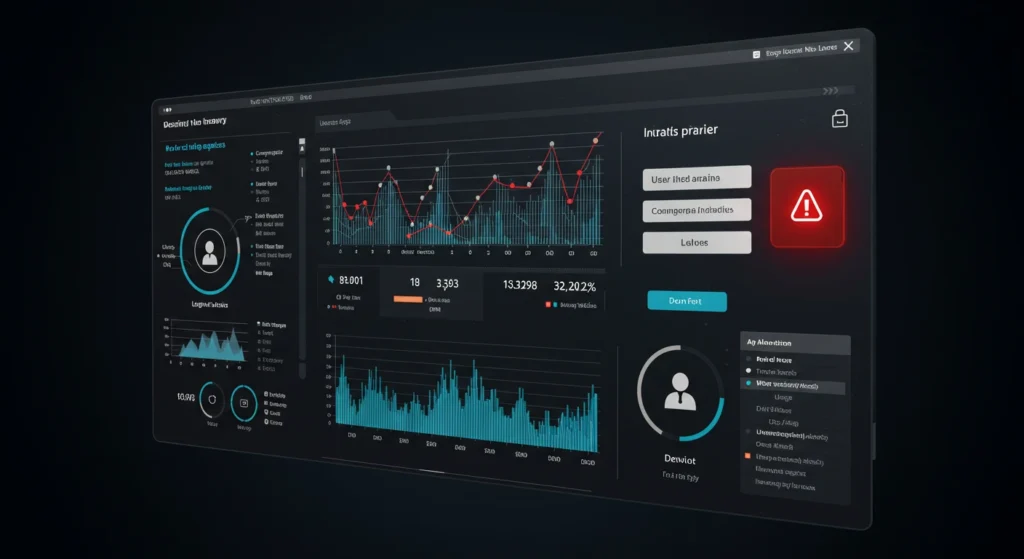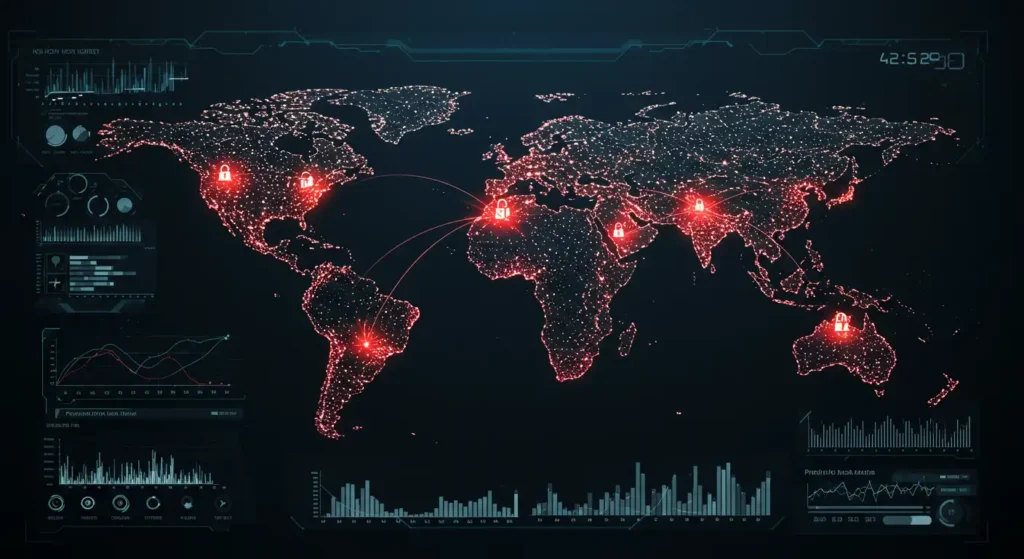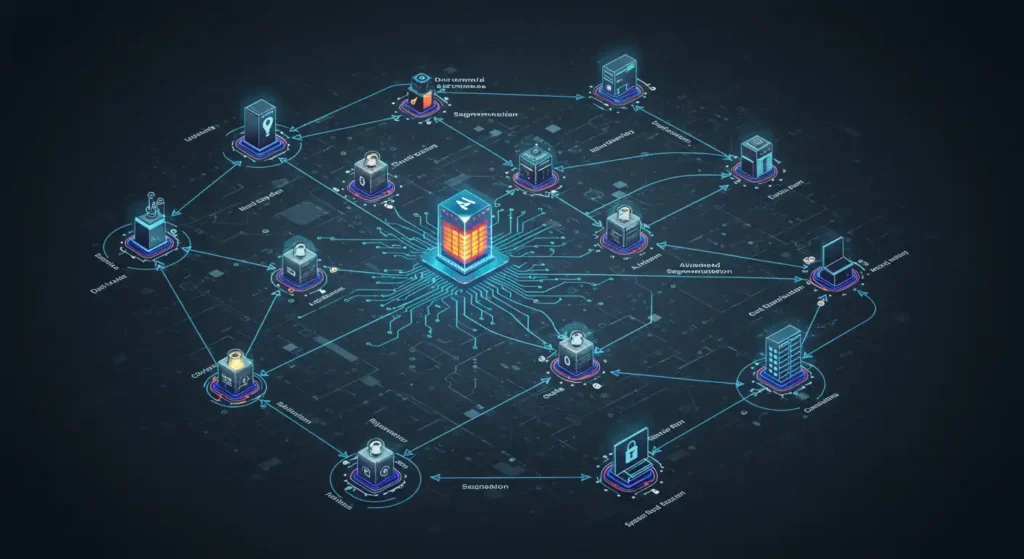The Role of AI Cybersecurity in Modern Threat Defense
In today’s hyperconnected world, AI cybersecurity has become a cornerstone of modern defense strategies. With the increasing volume and sophistication of cyber threats, traditional methods are no longer enough to secure our networks and data. Artificial intelligence is stepping in to revolutionize cybersecurity by detecting threats before they occur, preventing intrusions in real time, and adapting to new forms of attacks. In this article, we dive deep into how AI is transforming cybersecurity, improving network security, and delivering robust protection.
AI Cybersecurity and Intrusion Prevention Services

AI cybersecurity is transforming how organizations defend against cyber threats by significantly enhancing intrusion prevention services. These services no longer depend solely on pre-programmed rules or known threat signatures; instead, AI enables systems to recognize and block suspicious activity dynamically.
Traditional intrusion detection systems (IDS) and intrusion prevention systems (IPS) often rely on static rule sets and predefined attack signatures. While useful, they struggle to keep up with new attack vectors and zero-day vulnerabilities. With AI integrated into these systems, however, detection and prevention become adaptive. AI models constantly learn from both historical and real-time data, enabling them to recognize unfamiliar patterns that suggest malicious activity.
How AI Detects Anomalies
AI leverages machine learning algorithms that are trained on massive volumes of network activity data. By understanding what “normal” looks like for a specific network, the artificial intelligence can flag deviations that may indicate a breach attempt. For example, an AI system can detect unusual login times, unexpected data access patterns, or irregular file transfers all signs of a potential attack.
Behavioral analytics plays a central role here. Instead of relying on blacklists or rule-based logic, behavioral analytics enables AI to assess user actions over time. If a user typically accesses email and suddenly begins downloading sensitive files from secure databases, the AI flags this as anomalous and triggers alerts or automated blocks.
Real-Time Intrusion Prevention in Action
In real-world applications, AI-driven IPS solutions are capable of making split-second decisions. For instance, when a distributed denial-of-service (DDoS) attack begins, AI can detect the surge in traffic and distinguish between legitimate requests and malicious ones. It can then throttle or block the bad traffic before it overwhelms the system.
This real-time capability is essential in today’s threat landscape. Cyberattacks often unfold in minutes or even seconds. Artificial intelligence allows cybersecurity tools to match this speed, automatically executing countermeasures such as IP blocking, session terminations, and user account suspensions.
“Modern intrusion prevention systems (IPS) enhanced with artificial intelligence and machine learning significantly reduce false positives and improve detection of evasive threats, enabling security teams to focus on real risks rather than chasing down benign alerts.” (source)
AI Cybersecurity And Predictive Security: Anticipating and Neutralizing Cyber Threats

Predictive security is perhaps the most powerful application of AI cybersecurity today. Rather than reacting to attacks, AI enables systems to anticipate them. This proactive approach significantly reduces the likelihood of a successful breach.
Predictive security uses historical data, real-time monitoring, and advanced analytics to forecast potential attacks. Artificial intelligence identifies risk factors, such as unusual system behavior or network vulnerabilities, before they can be exploited. It’s like having a digital crystal ball but powered by data and machine learning.
Machine Learning for Predictive Security
Machine learning algorithms excel at pattern recognition. In cybersecurity, this means identifying the subtle clues that precede an attack. For example, artificial intelligence might detect a pattern of small, seemingly benign anomalies failed login attempts, port scans, or unauthorized access attempts. While each action may not trigger alerts independently, together they form a suspicious pattern.
These algorithms are trained on diverse datasets that include past breaches, threat actor behavior, and internal network traffic. This enables AI to spot emerging attack vectors that human analysts or conventional systems might miss.
From Reaction to Prevention
The shift from reactive to preventive security is a game-changer. According to IBM Security’s 2023 report, organizations that used AI-based security solutions identified and contained breaches 28% faster than those without AI.
This speed matters. The longer a threat lingers undetected, the more damage it can do. Predictive security can automatically prioritize alerts, patch vulnerabilities, and reconfigure access controls without waiting for human intervention.
Some advanced platforms even use reinforcement learning to test network defenses against simulated attacks and improve responses over time.
Threat Detection with AI: Identifying Risks in Real Time

Real-time threat detection is the heartbeat of AI cybersecurity. With the average cost of a data breach reaching over $4.45 million in 2023, the ability to detect threats as they emerge is vital for businesses of all sizes.
AI’s real-time detection capabilities depend on continuous monitoring, behavioral analysis, and deep integration with other systems. These tools constantly ingest data from firewalls, cloud services, email gateways, and endpoint devices, allowing for a holistic view of an organization’s risk profile.
Behavioral Analytics and Threat Intelligence
One of the most effective tools in real-time detection is behavioral analytics. This technique uses artificial intelligence to create profiles of typical user behavior. When a deviation occurs such as logging in from a new device, accessing files at unusual hours, or attempting to move large amounts of data AI flags the activity as suspicious.
This is particularly effective against insider threats, which are notoriously difficult to detect with traditional tools. By establishing a baseline of normal behavior, artificial intelligence can detect both external and internal threats more accurately.
Moreover, AI-powered platforms incorporate global threat intelligence. These feeds provide real-time information about new vulnerabilities, malware strains, phishing campaigns, and threat actor tactics. When correlated with internal data, they give organizations a more informed and dynamic defense posture.
Zero-Day Exploit Defense
Zero-day vulnerabilities are unknown to software vendors and often exploited before patches are available. Because they lack known signatures, traditional antivirus solutions can’t detect them.
AI overcomes this by focusing on behavior rather than static signatures. If a piece of software suddenly tries to escalate privileges, disable security tools, or communicate with a command-and-control server, artificial intelligence recognizes these actions as red flags.
Platforms like Darktrace and CrowdStrike use these methods to neutralize zero-day attacks before they spread, often by isolating affected devices from the rest of the network.
Network Security Reinvented with AI Cybersecurity

Network security is undergoing a transformation thanks to AI cybersecurity. In an age where organizations operate across on-premises, cloud, and hybrid environments, protecting the entire digital infrastructure is more complex than ever.
AI helps manage this complexity by automating key security functions and adapting to changing threats in real time. This includes monitoring traffic, segmenting networks, isolating anomalies, and enforcing compliance policies.
AI-Powered Firewalls and Endpoint Security
Traditional firewalls operate on pre-configured rules. AI-enhanced firewalls, however, dynamically adjust their rules based on evolving threats. They can automatically identify risky traffic, adapt to new attack vectors, and even generate alerts for previously unseen behavior.
AI also fortifies endpoint protection platforms (EPP). These platforms now use behavioral analytics, threat scoring, and automated response systems to quarantine compromised endpoints and reduce the attack surface.
Network Segmentation and AI Control
AI enables smarter network segmentation, a technique used to divide networks into secure zones. Artificial intelligence can automatically classify devices based on behavior, risk level, and role ensuring that even if one segment is breached, the threat can’t easily spread.
Adaptive security models that incorporate AI ensure that as devices move between networks or change usage patterns, segmentation policies update accordingly. This is especially important in environments like hospitals, universities, and enterprises with BYOD (Bring Your Own Device) policies.
How AI Cybersecurity Defends Against Evolving Cyber Threats

Cyber threats are becoming more sophisticated and evasive, but AI cybersecurity evolves just as fast. Through constant learning and model updates, artificial intelligence can counteract new threats that bypass conventional defenses.
AI engines learn from global data feeds, local threat activity, and internal behavior to identify and classify new forms of malware, ransomware, phishing schemes, and insider threats.
Social Engineering and Phishing Attacks
AI plays a critical role in detecting social engineering and phishing. By scanning emails, URLs, and documents, AI can identify spoofing, suspicious attachments, and text anomalies.
Natural Language Processing (NLP) allows AI to understand the context and tone of messages, flagging impersonation attempts or suspicious requests for sensitive information.
Email security gateways powered by AI (e.g., Microsoft Defender, Proofpoint) detect and quarantine phishing emails with a high degree of accuracy, even when threat actors attempt to mimic internal communications.
Malware Detection and Classification
Traditional malware detection depends on known virus signatures. AI-powered tools, on the other hand, detect malware based on behavior and execution patterns.
For example, if a newly downloaded application tries to access admin privileges, communicate externally, and modify system files simultaneously, AI will block it even if the specific malware has never been seen before.
With AI continuously analyzing billions of files globally, threat classification becomes faster, more accurate, and less prone to human error.
Final Thoughts: Why AI Cybersecurity is the Future of Digital Defense
AI cybersecurity is not just a tool it’s a foundational pillar for future-proofing organizations against cyber threats. By offering predictive security, real-time detection, and adaptive prevention, AI helps businesses of all sizes safeguard their digital assets.
Ready to upgrade your security strategy?
Embrace AI cybersecurity and stay one step ahead of hackers. Explore advanced intrusion prevention tools powered by AI and start protecting your network today!
Subscribe to our newsletter to receive more cutting-edge insights on AI Cybersecurity, AI, and the future of human-machine evolution.
